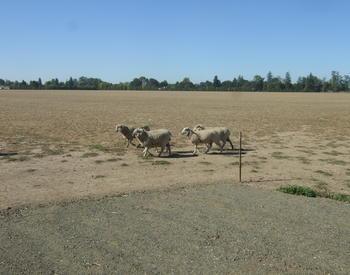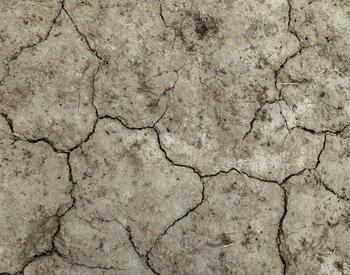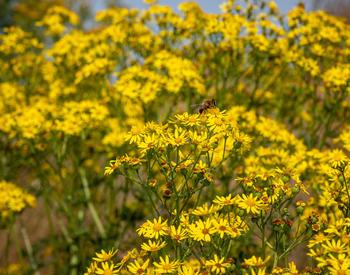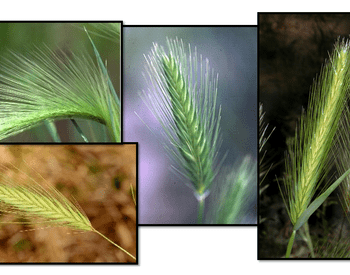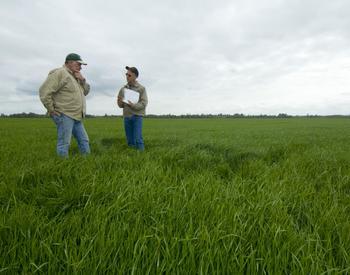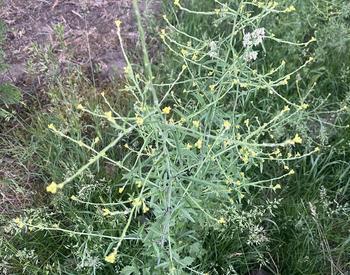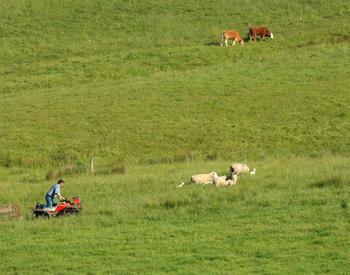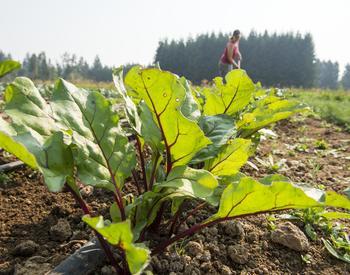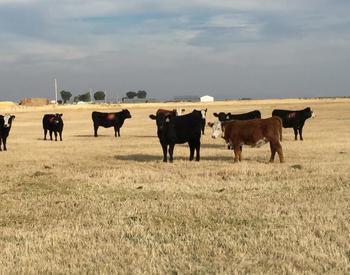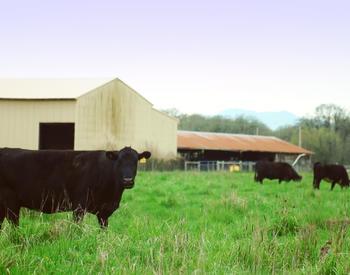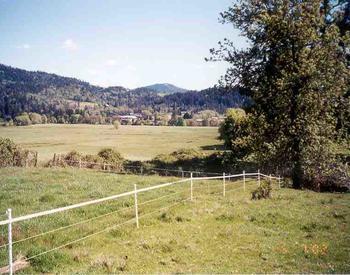CORVALLIS, Ore. – As climate change continues to stir up the weather in unprecedented ways, farmers in the Willamette Valley struggle to provide summer forage that will survive extreme conditions to feed their livestock.
In a needs assessment survey, meetings and personal contact with Oregon State University Extension Service, western Oregon growers have been clear about the challenge of growing plants that will perform well in a climate that is increasingly unpredictable.
As OSU Extension’s organic pasture and forage specialist, Shayan Ghajar hears it all. Through a grant from OSU’s Agricultural Research Foundation, he started a research project to find warm-season species that will be successful in the region.
“The trend is for the decreasing predictability of rain and that’s incredibly challenging,” said Ghajar, who is professor of practice in the College of Agricultural Sciences. “It can be very brutal for plants. Oregon pastures are cool season, which means they grow in cooler, wetter weather. Oregon’s climate in the Willamette Valley tended to be very dependable for forages. Cool-season forages are still important but are no longer as reliable in warmer or more arid months.”
In August 2022, about 27% of Oregon was classified in the most severe exceptional drought category by the U.S. Drought Monitoring Service. Before that, much of western Oregon experienced an exceptionally rainy, cool spring lasting into late June. These extremes reduce pasture and hay productivity and double the cost of feeding livestock because of lower summer yields and increased costs of supplemental feed for their animals.
Hay, typically used in winter, is expensive to produce or buy, Ghajar said.
“We need warm-season forages, something to fill the void,” he said. “Buying hay is a losing proposition for most farms, especially small farms. They pick up the dregs. Economically, it’s disastrous to buy hay for both winter and summer feeding. It’s just not viable.”
For millennia, forage and crop species in other regions around the world have dealt with extreme variation in precipitation and temperature, and Ghajar looked to them for subjects to trial at the U.S. Department of Agriculture Plant Materials Center in Corvallis and five farms throughout western and southern Oregon. It’s possible some of the species useful in these areas will prove successful.
“Last year was the trial balloon, the first test,” Ghajar said. “We torture tested them, intentionally doing a lot of things wrong. We only plowed once, they got no water at all the first year and only irrigation at planting this year and there was no weed control. We wanted to see how they performed in adversity.”
In 2022, Ghajar planted randomized blocks of annual forages and evaluated them for yield and nutritive value and also set out to determine the best sowing dates and growing conditions. They concentrated on cowpeas (Vigna unguiculata), mung beans (Vigna radiata), lablab (Lablab purpureus) and crabgrass – considered a weed by most but the species Digitaria ciliaris is good for forage. Cowpeas, lablab and mung bean have the added advantage of fixing nitrogen in the soil making it available to plants.
Lablab is a tropical legume that does well in regions with a wet season followed by a hot, dry season. Ghajar is testing it in dryland and irrigated plots. Cowpeas make a good cover crop and can be grown for forage as well as for black-eyed peas. Mung beans are palatable for livestock, germinate quickly and are very productive but can be plagued by pests and quickly eaten by rodents.
Mixture of plants is ideal
His research continued in 2023, when he added Maximilian sunflower (Helianthus maximiliani), safflower ‘Baldy’ (Carthamus tinctorius var. ‘Baldy’), sesbania (Sesbania sesban), sunn hemp (Crotalaria juncea) and sweet blue lupine (Lupinus angustifolius).
While most showed promise, the ‘Baldy’ safflower was too spiny to be palatable, and sesbana and forage-bred sweet blue lupine are hard to find on the market. A mixture of the plants would be ideal at this point, Ghajar said.
So far, the best combination with seeds readily available on the market is sun hemp, cowpeas and mung beans, all important nitrogen fixers that act like the Native American tradition of growing corn, bean and squash that complement each other. The sun hemp grows tall like corn and gives support to the other species, which fill and to help with soil moisture retention and weed control.
Warm-season grasses like dwarf pearl millet make a good addition to the mix because they add biomass and fiber for ruminants. Adding millet will complement the other species, which may boost its productivity with their nitrogen fixation. While all these species are annuals and would need yearly reseeding, Ghajar hopes to add more perennial species to trials in the summer of 2024. The project continues for at least another year thanks to funding from OSU’s Agricultural Research Foundation.
“Some did very well in both dryland and irrigated tests and deserve more research,” he added. “Others not so much. Time will tell, but with the climatic uncertainty we’re having, it’s important to have a wide variety of options for our pastures, so producers and their animals can adapt and thrive.”
